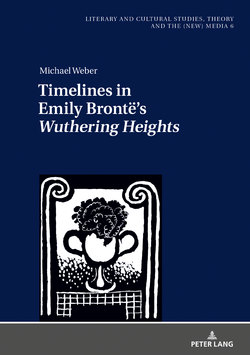Читать книгу Timelines in Emily Brontës «Wuthering Heights» - Michael Weber - Страница 9
На сайте Литреса книга снята с продажи.
ОглавлениеPreliminary Notes
Citations:
Quotations are taken from Emily Brontë: Wuthering Heights, The World’s Classics 10, Oxford University Press, London, 1972 (abbreviated ‘WH’). The chronologically relevant time references and grammatical tenses of this edition are identical to those of the two critical editions, that is the 1976 Clarendon Edition edited by Hilda Marsden and Ian Jack (Clarendon Press, Oxford), and the 2003 Fourth Edition of the Norton Critical Edition edited by Richard J. Dunn (W. W. Norton & Company, New York, London), as well as the English and North American First Editions (Wuthering Heights by Ellis Bell, Thomas Cautley Newby Publishers, London, 1847, and Wuthering Heights by the Author of “Jane Eyre”, New York: Harper and Brothers, Publishers, 82 Cliff Street, 1848). The 2009 Oxford University Press Edition of Wuthering Heights has not been used because, according to the editor, “some […] minor typographical errors in Clarendon have been silently amended” (Small, p. XXIV). These modifications include the length of the dashes on the first page of the novel.
Chapter references:
References to chapters in Wuthering Heights are written in Arabic numerals (e.g. Chapter 32); references to chapters in this book are written in Roman numerals (e.g. Chapter II).
The term ‘time reference’:
The term ‘time reference’ is used to refer to all expressions of time, both concrete and relative, and include references to days, months, years, dates, ages, time spans, festive occasions, seasons and weather connected to those seasons.
Character names:
Because several characters have the same name, certain precautions must be taken to avoid any confusion. What is more, it should be noted that certain names are liable to sway value judgements, and this applies not least to their use by the narrators in the novel itself. To avoid these problems, the following neutral names are used.
Heathcliff: He has no surname. From the year 1782, after his return to Wuthering Heights, Ellen Dean addresses him as Mr. Heathcliff, though she continues to call him Heathcliff when narrating the story. In order to counteract the widespread though unjustified disdain for his person, her example is not followed ←11 | 12→here, even if this deviates from philological practice. From 1782 he is called Mr. Heathcliff, and indeed Mr. Lockwood only ever speaks of him in this way.
Catherine Linton: Edgar Linton always calls his daughter Cathy and his wife Catherine. By doing so, he not only distinguishes between mother and daughter, he avoids calling his wife by the name that Mr. Heathcliff has used for her since their childhood together: Cathy (WH, 228). Catherine Linton (the daughter), however, is frequently called Catherine, not Cathy, by others. In order to distinguish between mother and daughter and to avoid misunderstandings, here the daughter is called Cathy – as Daley suggests (1974, p. 340). Stevenson (1985, p. 165) does the opposite, even though it is more plausible to refer to the daughter by the name usually used to address her. Mr. Heathcliff calls Catherine Linton “Miss Linton” or “Catherine Linton”. After he marries her to Linton Heathcliff, he either calls her Catherine or he uses insults. Unlike Edgar Linton, he never calls her “Cathy”, the name he called her mother.
All other main characters: As children and youngsters, they are called by their first names only, as adults by their first names and surnames.
Married female characters: After marriage, their maiden names continue to be used to aid identification and to avoid the use of double surnames.
Textual style:
Book and journal titles, technical and literary terms and terms defined in the text are in italics. Emphasis, especially chronologically important information, is letterspaced. Direct quotations are in double quotation marks.
←12 | 13→
